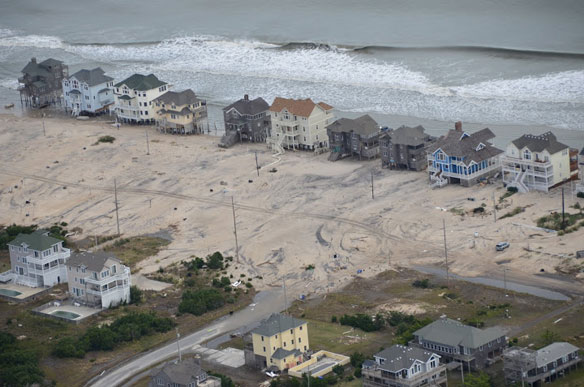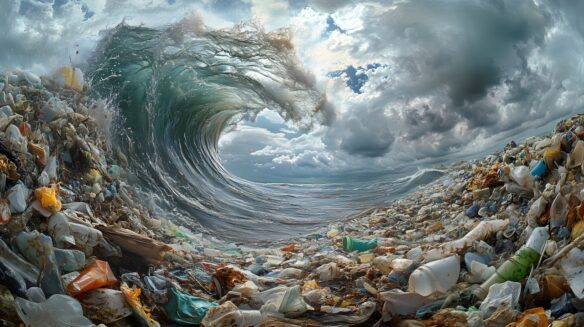
Aerial pictures of North Carolina’s coast, after superstorm Sandy devastated the area. Photo courtesy of: © Program for the Study of Developed Shorelines (PSDS) / WCU
Excerpts;
In the wake of Hurricane Sandy, Americans are finally beginning to ask themselves whether or not it might be advisable to build up to the edge of the sea. It is dawning on us that we are dealing with a human-made rather than natural disaster.
The surge of populations to the sea has been accelerating in recent decades and losses have begun to mount astronomically as expensive properties, encouraged by federally-subsidized insurance, crowd the seashore. On American coasts, a culture of coping—the product of thousands of years of human habitation, on shores that began in prehistoric Africa and ultimately circled the globe—is rapidly vanishing.
Our ancestors knew not just how to live on the sea, but with it. They came there to enjoy the most productive environment the world could offer: in terms of what the land could provide, as well as the even-richer marine biota located just offshore. First as hunters and gatherers, and later assisted by sail and ultimately steam, coastal societies generated social and economic resources greater than their inland neighbors. In the early modern period, it was by means of seaborne empires that Europe extended its world dominance. The United States was born coastal, discovered and settled by sea. In 1837, Alexis de Tocqueville predicted for the young republic a glorious maritime future. The opening up of the North American continent ultimately turned this country inward, but it has always been multishored, facing out toward the Atlantic, Pacific, and the Gulf…
Read Full Article, The Chicago Blog, University Of Chicago Press
The Human Shore: Seacoasts In History, A book by John R. Gillis









